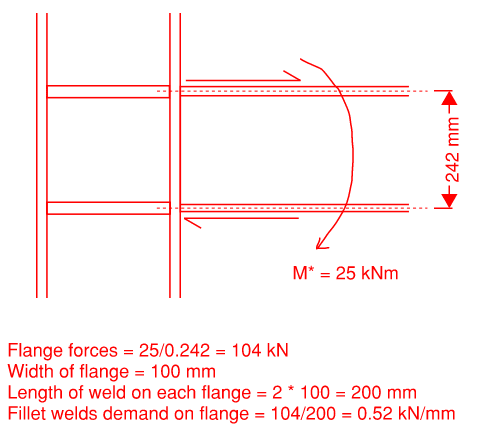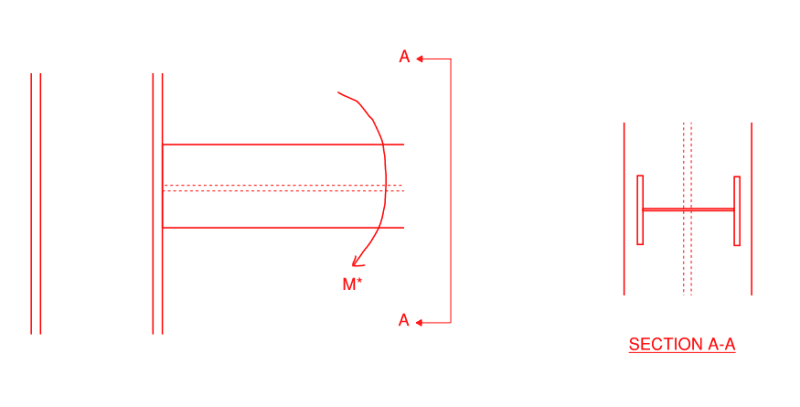Hi folks, relatively new engineer here. I have a question about determining the weld demand for an end connection on an I-beam that’s bending about its minor axis.
When dealing with an I-beam bending about its major axis, the simplified approach typically involves resolving the couple of forces resulting from the bending moment. The tension at the top flange is resisted by the fillet welds, while the compression at the bottom flange is transferred to the column and stiffeners.

However, I’m curious how this changes when the beam is rotated 90 degrees and bends about its minor axis, fillet welded all around. Although I haven't encountered this configuration in practice, I'm interested in understanding how to evaluate the weld demand in such a case. Would it follow the same principles, or are there different considerations that come into play?

I'd appreciate any insights or references you can share.
Cheers.
When dealing with an I-beam bending about its major axis, the simplified approach typically involves resolving the couple of forces resulting from the bending moment. The tension at the top flange is resisted by the fillet welds, while the compression at the bottom flange is transferred to the column and stiffeners.

However, I’m curious how this changes when the beam is rotated 90 degrees and bends about its minor axis, fillet welded all around. Although I haven't encountered this configuration in practice, I'm interested in understanding how to evaluate the weld demand in such a case. Would it follow the same principles, or are there different considerations that come into play?

I'd appreciate any insights or references you can share.
Cheers.
